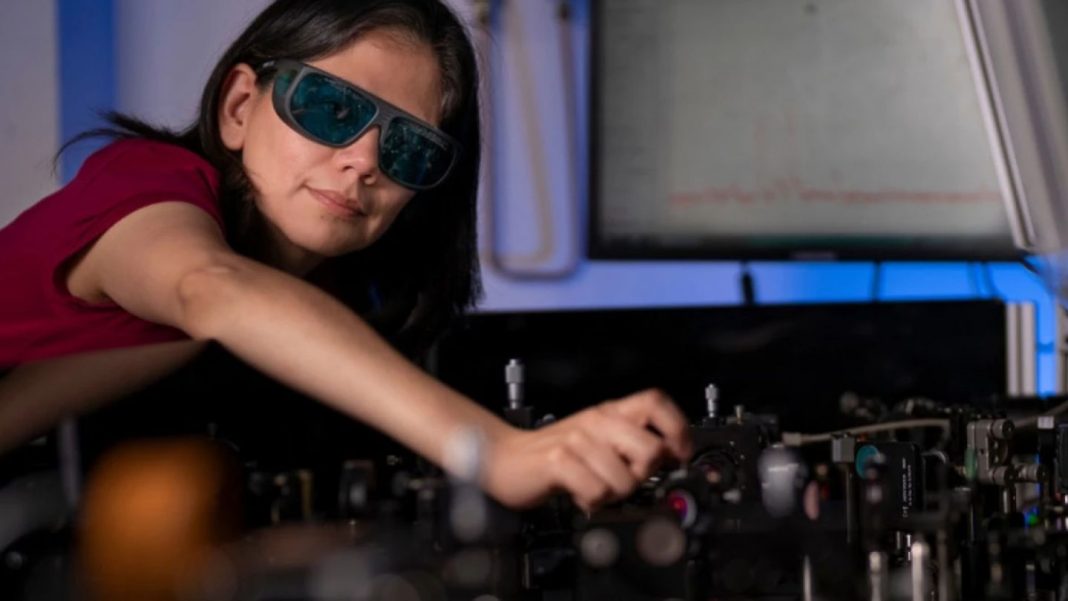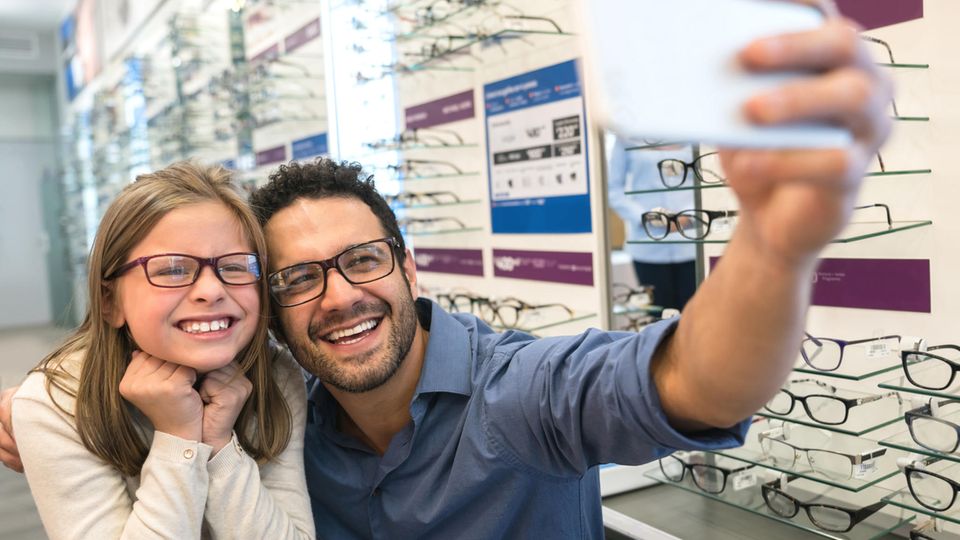Research
Thin film transforms normal glasses into night vision devices

The device is almost indistinguishable from ordinary glasses.
© Jamie Kidston / Australian National University / PR
Australian scientists circumvent the complicated technology of conventional night vision devices by coating them with nanocrystals.
Night vision devices turn night into day, they are indispensable in the military. But it is still unwieldy and expensive devices that turn darkness into a visible image with the help of electronics. Another problem: for a good result, the interior of the devices must be cooled down sharply. No wonder these devices are expensive and clunky.
Scientists at the Australian National University (ANU) are now treading a completely different path. A thin coating with the semiconductor gallium arsenide should perform the same service. The material transforms” invisible ” infrared rays into visible light. It is still a proof-of-concept. in 2016, the team succeeded in placing these nanocrystals on a glass surface for the first time. Then a pattern was made of tiny crystals, which together form a film. Now the scientists have produced a prototype version of this film, which is light, cheap and easy to mass-produce.
Little technology in night vision goggles
“We have made the invisible visible,” says lead researcher Dr Rocio Camacho Morales. “Our technology is able to convert infrared light, which is normally invisible to the human eye, and turn it into images that people can see clearly – even from a distance. We made a very thin film consisting of crystals in the nanometer range, a hundred times thinner than a human hair, which can be applied directly to glasses and acts as a filter so that you can see even in the darkness of the night.”
“Conventional night vision goggles work by also absorbing infrared light,” says Camacho Morales. “This infrared light is converted into electrons and displayed digitally. In our case, we do not do this.”In order to achieve a uniform image, night vision devices require complex cooling systems, which would also be superfluous. “We avoid the problems of having to cool down the camera and display devices,” says Camacho Morales.
The film has a simple tiny laser, as found in laser pointers, which illuminates the nanocrystals and makes them shine. In this way, the film creates “visible images that can be seen in the dark.”
It will not be colored
The researchers hypothesize that the material could become a cheap and lightweight replacement for the bulky night vision goggles that are used in military, police and security facilities today. Ultimately, it would be little more than coated glasses. If a person were to wear glasses with the film during the day, they could still see all that they normally perceive with the naked eye, according to Morales. “In addition, you would see some infrared information.”
Without much effort you can go home at night in the dark, it is also conceivable to coat car windows with the material. However, the sensory impression remains as with the known night vision devices. It does not create a” beautiful ” multi-colored picture, as we are used to during the day. The impulses of the infarction area are translated into a single color – typically green.
Source: Advanced Photonics
Read also:
Military dream comes true-camera looks around the corner
Solar energy directly from the window-US company introduces transparent solar panels
Ade power poles – soon electricity will be transported wirelessly with a Tesla beam





